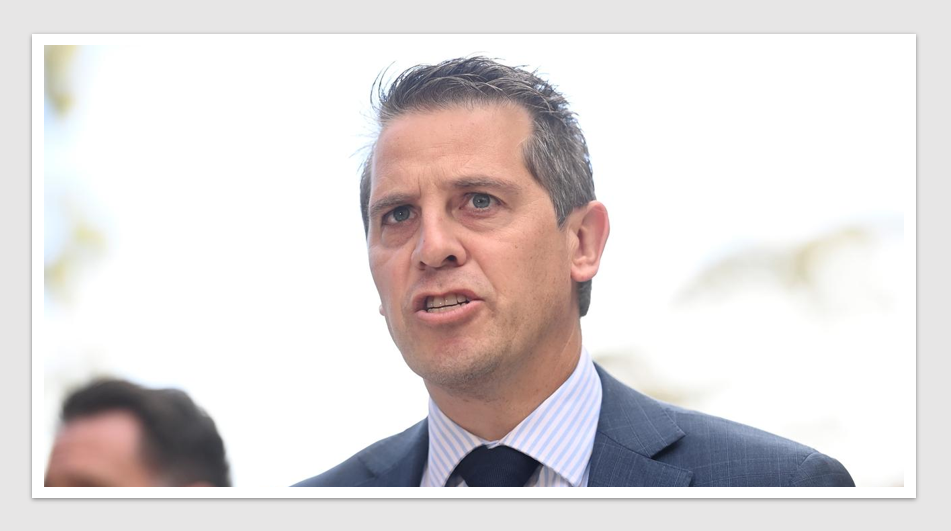Best Practice
7 Strategies to boost emotional resilience

Experts claim that the most successful people aren’t necessarily the most intelligent or best educated; they’re the most emotionally resilient. They don’t let negative emotions cloud their judgement. Instead, they acknowledge such feelings as being inevitable and take responsibility for their actions. They can step back from a situation and not allow their emotions to take over.
Peak performance coach and author Akash Karia discusses the seven major habits of “emotionally resilient” people and explains how to integrate these behaviours into your life.
Emotionally resilient people use seven key strategies to give them control over their feelings.
1: Respect Your Emotions
Resilient people “acknowledge their emotions, accept responsibility for them and learn to interpret the positive intentions of their emotions.” Wherever you are and whatever you’re feeling, take time out to honour this moment in time. Apply that sensibility to a real-life example. If someone says something mean to you, you might feel hurt or angry. How you respond to those words will depend on factors such as what the person said, your past experiences, your personality, and more. You may get angry and yell instead of acknowledging that you’re hurting.
Emotionally resilient people find the positive intentions behind their
negative emotions. One of the most powerful examples of emotional resilience comes from Viktor Frankl (1905–1997). In September 1942, Germans took Frankl to a concentration camp. He and millions of other Jewish people suffered cruel treatment at the hands of Nazis. Frankl
survived because he knew he couldn’t control or change his circumstances, only his response to them. As he wrote in Man’s Search for Meaning, Frankl realised that his pain and suffering could be teachers. After gaining his freedom, he gave back to others and became a psychiatrist and neurologist.
Enhance your business visibility, optimise reach and differentiate your brand. Health Industry Hub is the only one-stop-hub connecting your business to Australia’s Pharma, MedTech, and Biotech industry professionals. Get started with our unique media solutions.
2: Adopt “Power Postures”
Your body language reflects what you’re feeling inside. If you’re sad, your posture will be slumped and droopy; you might frown with your lips curved down or cry. If you’re happy or proud, your shoulders are square and held high as you laugh or smile with your lips curved up.
Power postures or poses occur when you take up a lot of space physically, stand or sit up straight with your shoulders back and your feet shoulder-width apart, and breathe deeply for two minutes. Within two minutes of adopting power postures, your testosterone levels increase by 20% and your cortisol levels decrease by 25%. Testosterone is a hormone found in both genders that increases confidence. Cortisol is the hormone that causes stress.
Use this physical technique to change your mental outlook. It’s hard to feel sad when you’re smiling. Even if you’re not happy, the small physical change of smiling produces positive effects. Practising breathing can help you become calmer.
3: Build Your Ability to Focus
You react the way you do because your brain finds meaning in each stimulus response. If you change the meanings you can change your responses – which will produce a different and possibly more positive emotion. Say two people both get fired. One proclaims that his life is over and he can’t possibly find another job as great. The other processes her pain differently. She sees it as a “blessing in disguise” and gives herself permission to try something new, such as switching careers or going back to school.
What you pay attention to becomes your focus. To assign positive meaning to external events, adjust your focus. Control what you focus on. What you pay the most attention to represents whatever will come into your life. By this logic, if you focus on how great things are, you’ll think life is swell and you’ll notice more positive developments. The reverse is also true. Your focus is “a kind of lens through which you view your life.”
4: Change Your Beliefs
Resilient people can change or adapt their beliefs and they respond to external stimuli in different ways. Your beliefs are so powerful that they affect you physically. For example, take the well-known placebo effect. Patients who take a placebo often feel better simply because they expect the treatment to make them feel better. Your beliefs can become self-fulfilling prophecies. If you’re fearful or anxious, you may feel physically sick. If you’re content or happy, you will feel better.
Replace a limiting belief with an empowering one. For example, “I am just a shy person” becomes “I have been confident in the past, which means I’m capable of being confident. I can do so at will as long as I learn how.” Repeat the new belief when the old belief tries to show up. Keep reinforcing your new belief until it becomes automatic. Once you’ve mastered those steps, you will be better equipped to control your emotions.
Register FREE to receive the latest news, innovations and insights from Health Industry Hub; the only one-stop-hub connecting Australia’s Pharma, MedTech and Biotech industry professionals and its key stakeholders.
5: Use the “Hidden Power of Questions”
Emotionally resilient people understand how to use questions to improve themselves. Be aware that loaded questions set you up for a negative response. These include such questions as, “Why does my boss never respect me? What did I do to deserve this?” and “Why is life so unfair?” Even if these assumptions aren’t true, your brain will seek a response that fits. If you find yourself asking a question with a negative presupposition, make the conscious decision to challenge it.
Alternative questions include “What can I learn from this?” and “How can I use those lessons to be successful at my new goals?” These alternatives encourage positive thinking and forward momentum rather than self-pity and depression. Developing greater self-awareness leads to greater mastery of your emotions.
6: Develop Positive “Self-Talk and Inner Movies”
Think back to childhood. Perhaps some pleasant memories come to mind, such as remembering home-cooked meals and good times with friends. Others may be more painful. Some memories may be vivid because you remember them through all five senses: seeing, tasting, smelling, hearing and touching. Emotionally resilient people don’t try to suppress or erase their memories.
Emotionally, your brain recreates memories through three senses: visual, auditory and kinesthetic. For example, if you’re angry, your brain will see an image in your head associated with that feeling. Your brain also will hear irate phrases that you may internally repeat to yourself. You may possibly sense anger in other people through a feeling, almost like physical touch. Try practising what your brain sees, hears and touches. If you experiment with your “movie controls,” you can diminish the impact of negative events.
Think of something negative – but not too negative, since this is your first practice exercise. Is your picture in black-and-white or colour? Try switching to the opposite format to see if that dampens your emotions. Try adjusting the brightness up or down. Look at the space around the memory. Is it happening near you or far away? Can you push it farther away if it’s too close? What happens if you make the size larger or smaller? Try to manipulate your association with the memory. Pretend it’s on a movie theater screen to gain some distance. Manipulate the focus by making it clearer or blurrier. See how that affects your memory.
In addition to manipulating images visually, you can learn to manipulate auditory cues. Think about the words you’re hearing. Instead of thinking to yourself, “I’m such an idiot for failing,” use more positive words such as, “I’m glad I made that mistake, because now I’ll never make it again.” You can substitute silly phrases or ideas that make you smile to take the steam out of negative phrases. Try to change the tone of what you hear. Accepting negative messages is harder if they’re spoken in a rude or condescending tone of voice. Practice changing the volume of the negativity. Pretend there’s a mute button, and hit it.
Physical and emotional memories have a kinesthetic aspect. As in the strategies above, you can adjust your kinesthetic memories by changing the “intensity, pressure” and “location” of any sensation. If your memories are intense, think of an imaginary dial you can turn to lower the intensity of negative recollections or to strengthen your view of positive memories. If you feel the pressure or weight of a situation, imagine having a balloon that could relieve the pressure. Examine the location of your memories. Can you move them to a different location either inside of or outside of your body?
You may also like The power of positive self-talk
7: Controlling the “ABC Loop”
Resilient people are better able to control their ABC loop. The A stands for antecedent or stimulus; B stands for behavior and C stands for consequence. To see the ABC loop in action, consider author Akash Karia’s experience. As a teenager, he had problems managing his anger and would end up in physical fights at least once a week. The fight would start with some other boy making fun of the size of his nose or saying something that embarrassed him, which made him angry. That was the antecedent. His behaviour was to hit the other boy. The consequence was that his teachers would punish him after his anger dissipated.
“Future pacing” is a technique for controlling emotional reactions that involves “stepping into the future and visualising a new ABC pattern.” The strategy lets your brain create different neural pathways that will help you handle the “offending antecedent” more effectively if and when it arises again.
Your emotional response – anger, hurt, fear – holds more control over you than you would like. “Allow yourself to acknowledge rather than suppress the emotions that come your way so that you can identify them accurately, learn more about them and eventually even learn to manage them.”
Reference: 7 Things Resilient People Do Differently (And How They Can Help You Succeed in Business and Life) by Akash Karia
News & Trends - MedTech & Diagnostics

Pathology reforms: Frozen fees, windfall gains, and the fight for bulk-billing
Diagnostics & MedTech News: For nearly a quarter-century, pathology fees have remained stagnant, a situation deemed patently unfair by Australian […]
MoreNews & Trends - Pharmaceuticals

Call for coordinated policy and cross jurisdiction funding in chronic disease
Pharma News: The life expectancy of Australians is still rising, however the increased prevalence of chronic conditions and co- and […]
MoreNews & Trends - MedTech & Diagnostics

Expansion of hospital services for patients in NSW Macarthur region
MedTech & Diagnostics News: Marking a historic milestone with NSW Deputy Premier Prue Car and Health Minister Ryan Park, Campbelltown […]
MoreNews & Trends - Biotechnology

Superiority of cell-based flu vaccine revealed in RWE study
Biotech News: Vaccines stand as the primary strategy to mitigate the considerable morbidity, mortality, and economic burden associated with influenza. […]
More